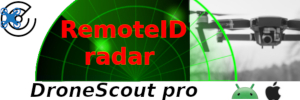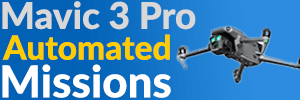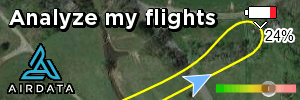Hello everyone, I have a general question about flying drones in winter, above or below freezing temps. It's almost that time of the year again, and this will be my first winter owning a drone, and I am sure the itch to fly will kick in some time after the snow falls.
Are my below understandings correct?
1. Higher altitude = lower temps, will be a problem to battery chemistry. I have seen two videos of 7000+ meter flights to know the battery can cool from low 30 degree C (90 F) to about 15 degree C (60 F) at the top.
2. Clouds = Mass of water droplets, which can freeze on the body and especially the blades. Ice drastically reduces lift and causes a crash. We also do not have de-ice boots like a fixed-wing aircraft would have on its wings, dunno if real helicopters have those on the rotors.
3. Downward obstacle avoidance may falsely interpret clouds or other reflections as the ground and stop its propellers thinking it has landed, XXX meters/feet in the air. Result = gravity wins. Not planning to enable prop-start-at-any-angle, and even that is not guaranteed to work anyway.
4. Air is denser when cold, but no idea what this means for actual flight performance (up to 500m if cleared/with permission)
If I do fly, am I on the right track with the following points?
1. Do not fly when humidity is high(er) and temperature above freezing: during flight, the fast spinning blades can transition moisture in the air to ice and cause a decrease in lift.
2. At below freezing temps, only fly maybe 1 hour after a snow event. This is to let moisture in the air drop even lower.
3. Anything I missed?
Thank you all!
Are my below understandings correct?
1. Higher altitude = lower temps, will be a problem to battery chemistry. I have seen two videos of 7000+ meter flights to know the battery can cool from low 30 degree C (90 F) to about 15 degree C (60 F) at the top.
2. Clouds = Mass of water droplets, which can freeze on the body and especially the blades. Ice drastically reduces lift and causes a crash. We also do not have de-ice boots like a fixed-wing aircraft would have on its wings, dunno if real helicopters have those on the rotors.
3. Downward obstacle avoidance may falsely interpret clouds or other reflections as the ground and stop its propellers thinking it has landed, XXX meters/feet in the air. Result = gravity wins. Not planning to enable prop-start-at-any-angle, and even that is not guaranteed to work anyway.
4. Air is denser when cold, but no idea what this means for actual flight performance (up to 500m if cleared/with permission)
If I do fly, am I on the right track with the following points?
1. Do not fly when humidity is high(er) and temperature above freezing: during flight, the fast spinning blades can transition moisture in the air to ice and cause a decrease in lift.
2. At below freezing temps, only fly maybe 1 hour after a snow event. This is to let moisture in the air drop even lower.
3. Anything I missed?
Thank you all!










